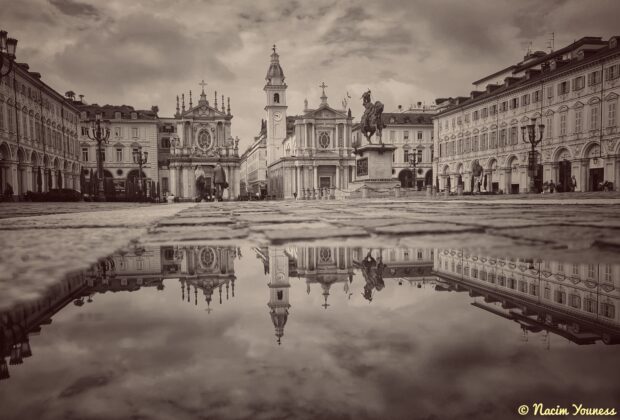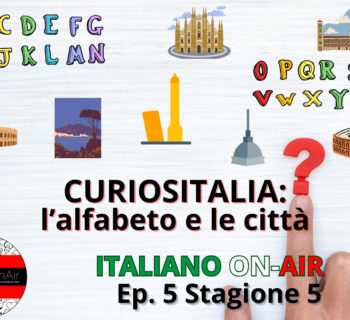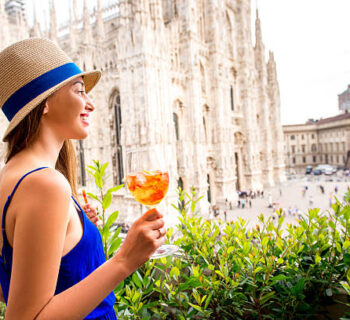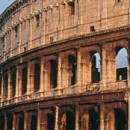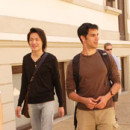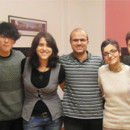Piazza San Carlo, as well as being the extraordinary setting of the new premises of our school 🥳🥳🥳 – in the very building where, in a symbolic passing of the cultural baton, the Goethe Institut operated for 70 years - is one of the places the people of Turin love the most as, among historic cafés and monuments, some of Turin’s most iconic locations can be found here.
The center of the square is dominated by the so-called Caval 'd brôns (literally the Bronze Horse), a statue by sculptor Carlo Marochetti representing Emanuele Filiberto of Savoy. The sculpture was placed there at the behest of Carlo Alberto on 4 November (appropriately St. Charles' Day) 1838 to commemorate the Piedmontese victory in the Battle of San Quintino (10 August 1557), a decisive episode for the expansion and consolidation of the Savoy territories. Very few people know that, although depicting a warrior, the monument symbolizes peace: the knight, in fact, is not unsheathing but sheathing his sword.
Important historical buildings overlook the square. On the longer, western side, we find Palazzo Guido Villa (or Turinetti di Pertengo or De Felicon), originally designed by Castellamonte for the Marquis Guido Villa but then sold in part to the Marquis Turinetti of Pertengo. The building houses the Intesa Sanpaolo Bank's historic headquarters and its legal and administrative departments. Recently, the Fondazione San Paolo opened there one of the Gallerie d’Italia where photography exhibitions periodically take place.
On the smaller side, towards Via Santa Teresa, we find the entrance to the Galleria San Federico, designed in the Thirties in eclectic style by Federico Canova and Vittorio Bonadè. Since then, the gallery has been home to fashionable shops and prestigious professional firms. Over the years, the newspaper La Stampa, insurance company SAI and football club Juventus were located there. On the same side, but towards Via Maria Vittoria, you can admire the Regia Farmacia Masino, a historic pharmacy founded in 1667: inside, ancient tools of the trade can still be found.
On the longer eastern side, we have Palazzo Solaro del Borgo, which still hosts the Whist Society, an exclusive private men's club founded in 1841 by Count Cavour to bring together the highest members of the aristocracy and some of Turin’s most important professionals, magistrates, bankers and scholars. The very special San Carlo Store is also located in this building.
On the smaller south-facing side are the so-called Baroque twin churches: Saint Cristina (on the left) and Saint Carlo (on the right).
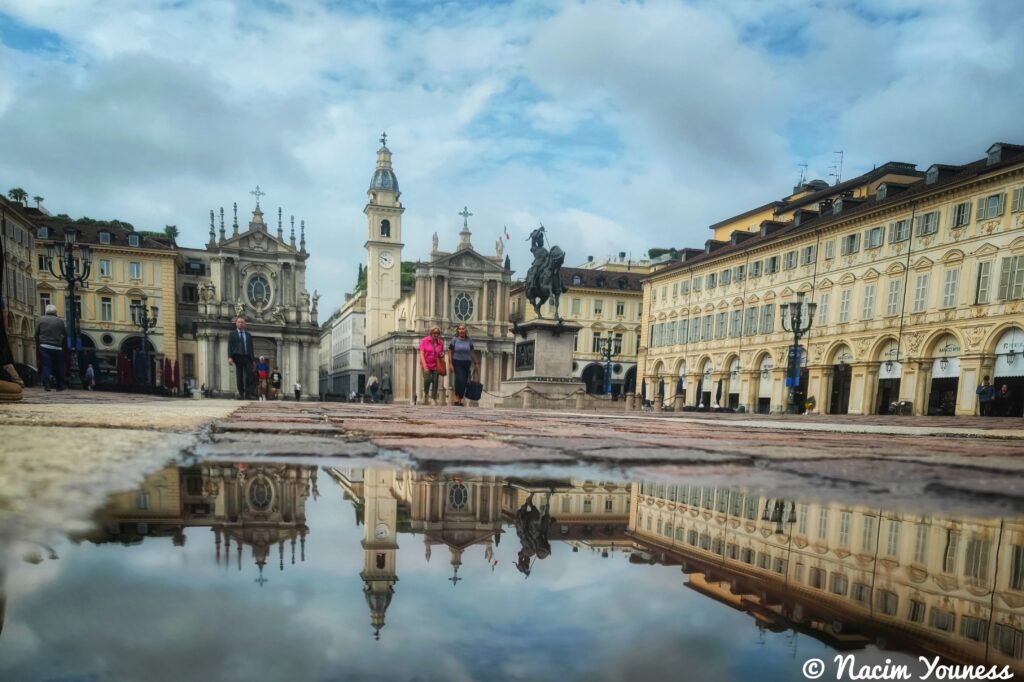
Piazza San Carlo is also home to some of the city's most famous historic cafés, which were often frequented by politicians and intellectuals in the past. The oldest is certainly the beautiful Caffè San Carlo, the first café in Italy to have gas lighting. Count Cavour and Giovanni Giolitti would sit and discuss politics among the stuccoes and statues that decorate it.
On the same side, almost on the corner with Via Alfieri, is the elegant and exclusive Caffè Torino, beloved by Cesare Pavese and Alcide De Gasperi. A small rampant brass bull, the symbol of the Piedmontese capital, is encased in the pavement in front of its entrance. The people of Turin believe that stepping on the bull’s "attributes" brings good luck, but unlike what happens in the Galleria Vittorio Emanuele II in Milan, a pirouette is absolutely forbidden.
Not far from the Caffè Torino, we find the historic grocery store of the Paissa Brothers, a reference point for well-to-do inhabitants, who would find spices, rare fruit and vegetables, and top-quality items. After it closed down in 2014, its premises were taken over by the Gran Biraghi company (the producer of Piedmontese "Parmesan"). The shop still features its antique furnishings and inside, you can find numerous Piedmontese products, but its highlight is the beautiful dressing of its windows, especially at Christmas.
On the other side of the square, at number 191, is the Confetteria Stratta. Founded in 1836, it is still known throughout Italy for its delicious products (chocolates and sweets) and for the charm of its colourful windows decorated with sweet boxes produced according to rigorous artisan techniques.
A final curiosity about the square is that in 1773, famous writer Vittorio Alfieri bought a house there, where he wrote his first tragedies and, together with some fellow scholars from the Academy, set up a society inspired by Voltaire.
So, dear students, we look forward to welcoming you to our new location!
Write us to get more information!
Read also:
What is the most beautiful square in Turin?
Scuola Leonardo da Vinci Turin
The welcoming friendly atmosphere of our school will make you feel at home and you can relax with your classmates in the small gardens of the adjacent pedestrian area.
Latest posts by Scuola Leonardo da Vinci Turin (see all)
- What is the difference between the Carabinieri and the Police? - November 26, 2025
- 5+1 scenic spots in Turin with the Scuola Leonardo - October 15, 2025
- Contemporary art in Turin? It’s also at the Scuola Leonardo! - October 1, 2025


